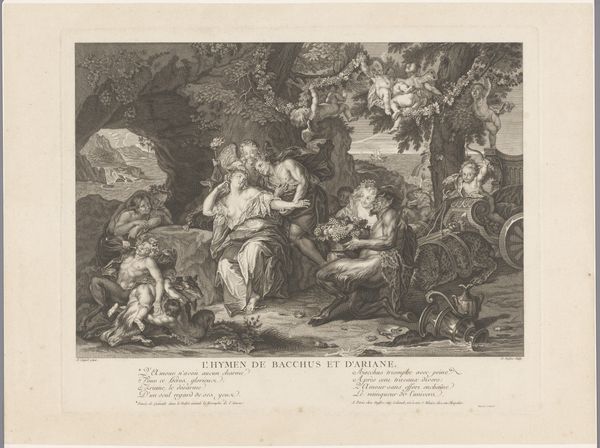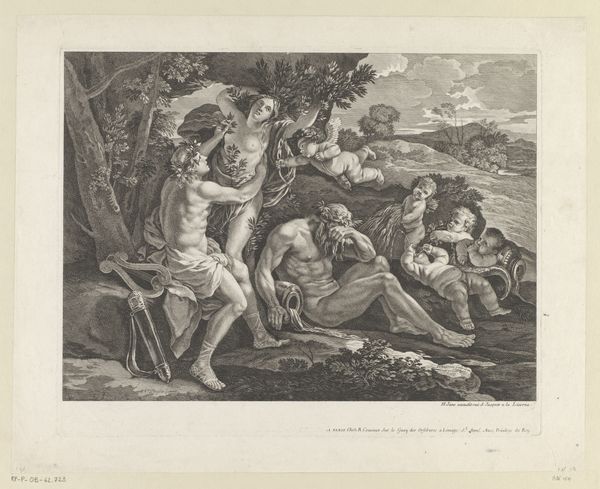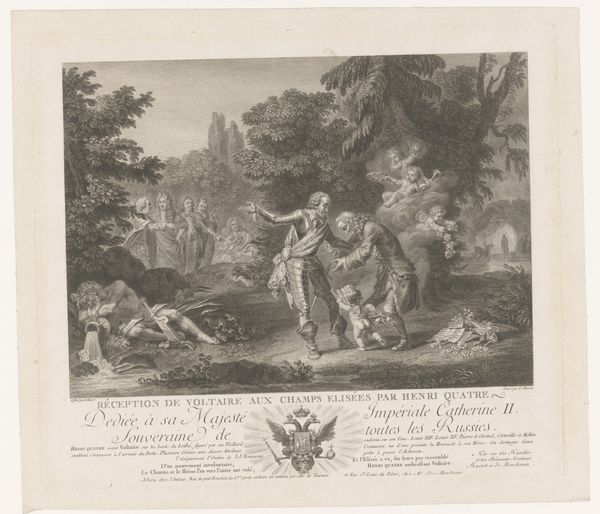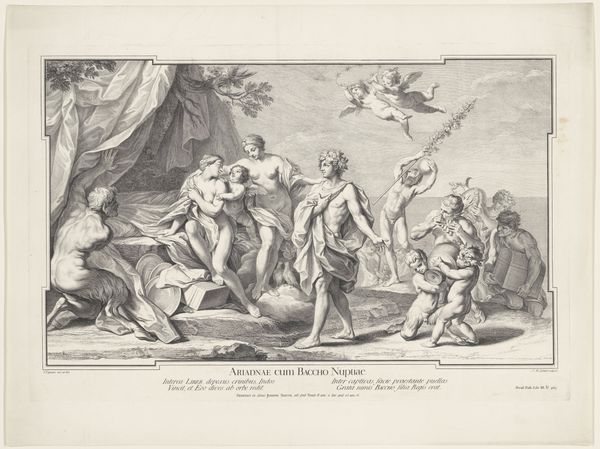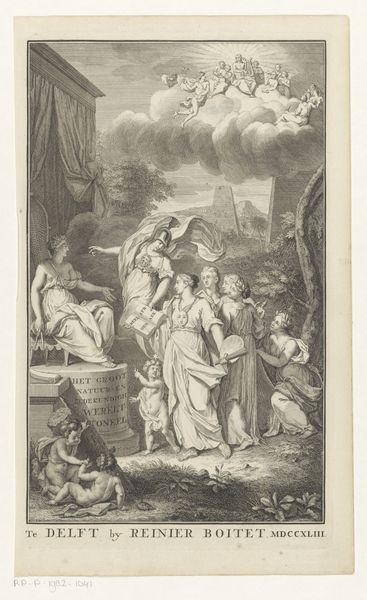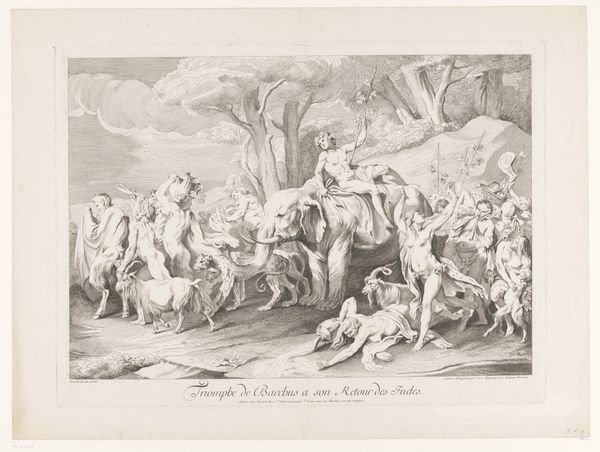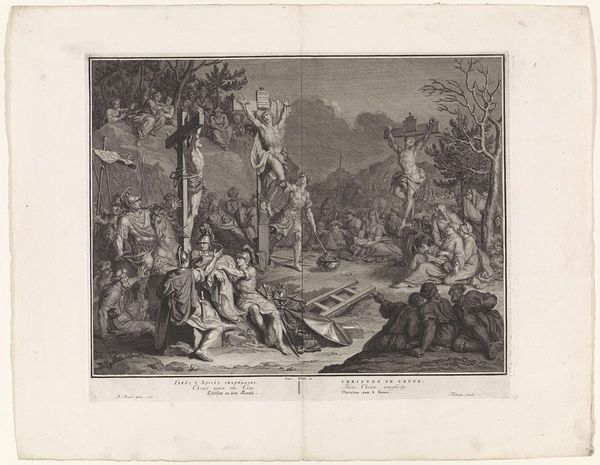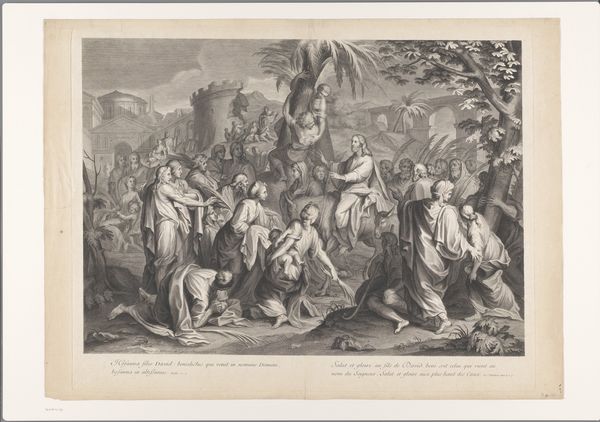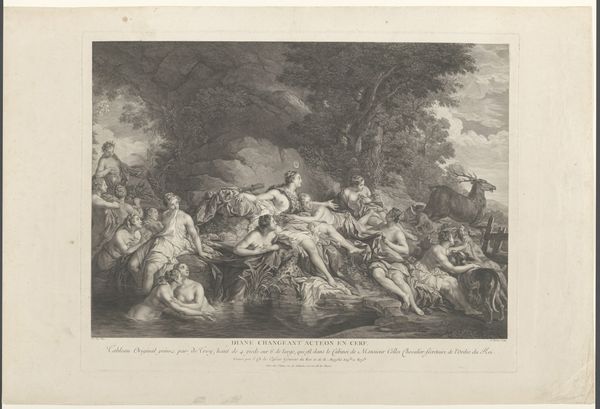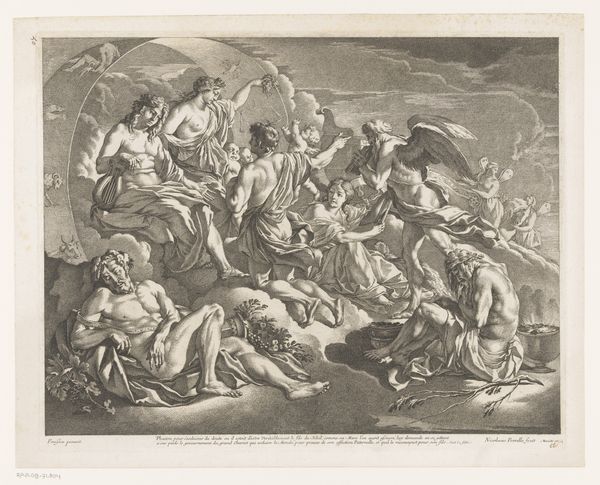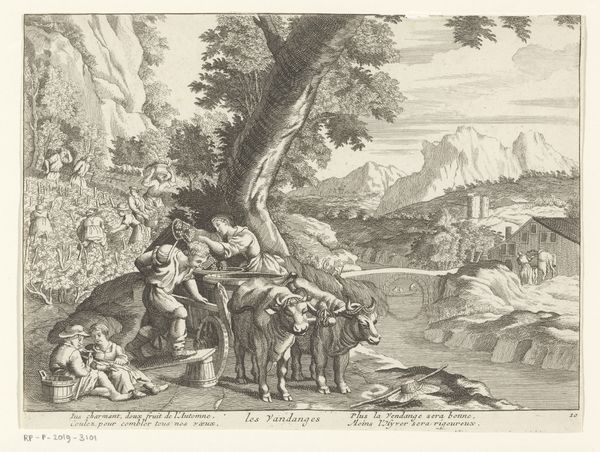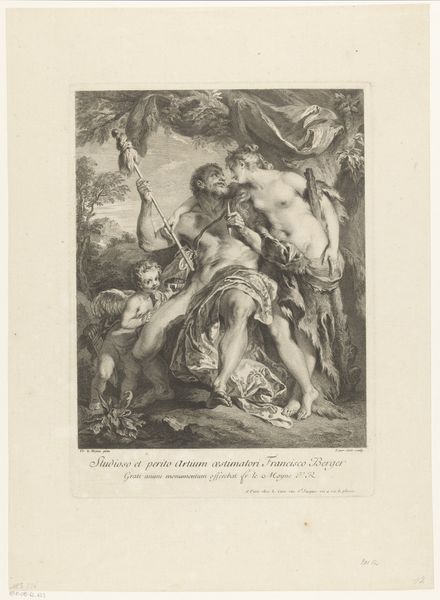
Dimensions: height 261 mm, width 338 mm
Copyright: Rijks Museum: Open Domain
Jean Pelletier etched "Bacchanten," sometime in the 18th century, presenting us with a scene brimming with the symbols of Bacchus, the Roman god of wine, fertility, and theatre. Notice the Bacchantes themselves, the female followers of Bacchus, entwined with vines and reveling in ecstatic dance and indulgence, echoing ancient rituals meant to liberate the spirit. Consider the garlanded statue: it's more than mere decoration, but an effigy of the god himself, a focal point of veneration and wild abandon. This image vibrates with a Dionysian energy, a concept seen in ancient Greek tragedies, symbolizing the unleashing of primal instincts. We see echoes of this in Renaissance paintings and even modern performance art, where the ecstatic body becomes a conduit for spiritual experience. The intoxicating dance, the overflowing cornucopia of earthly delights – these are not just aesthetic choices but powerful reminders of humanity's complex relationship with pleasure, divinity, and the uninhibited self.
Comments
No comments
Be the first to comment and join the conversation on the ultimate creative platform.


